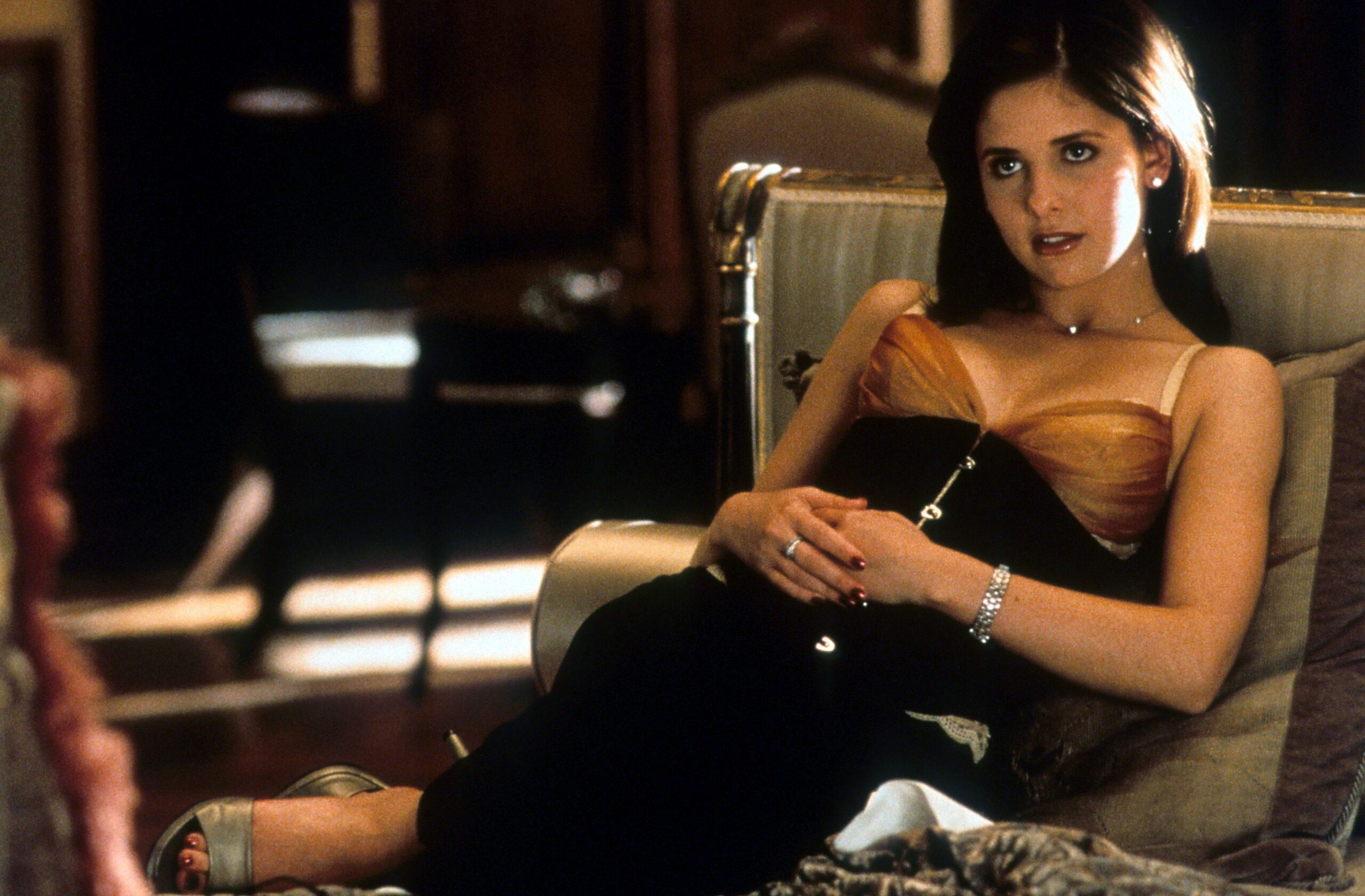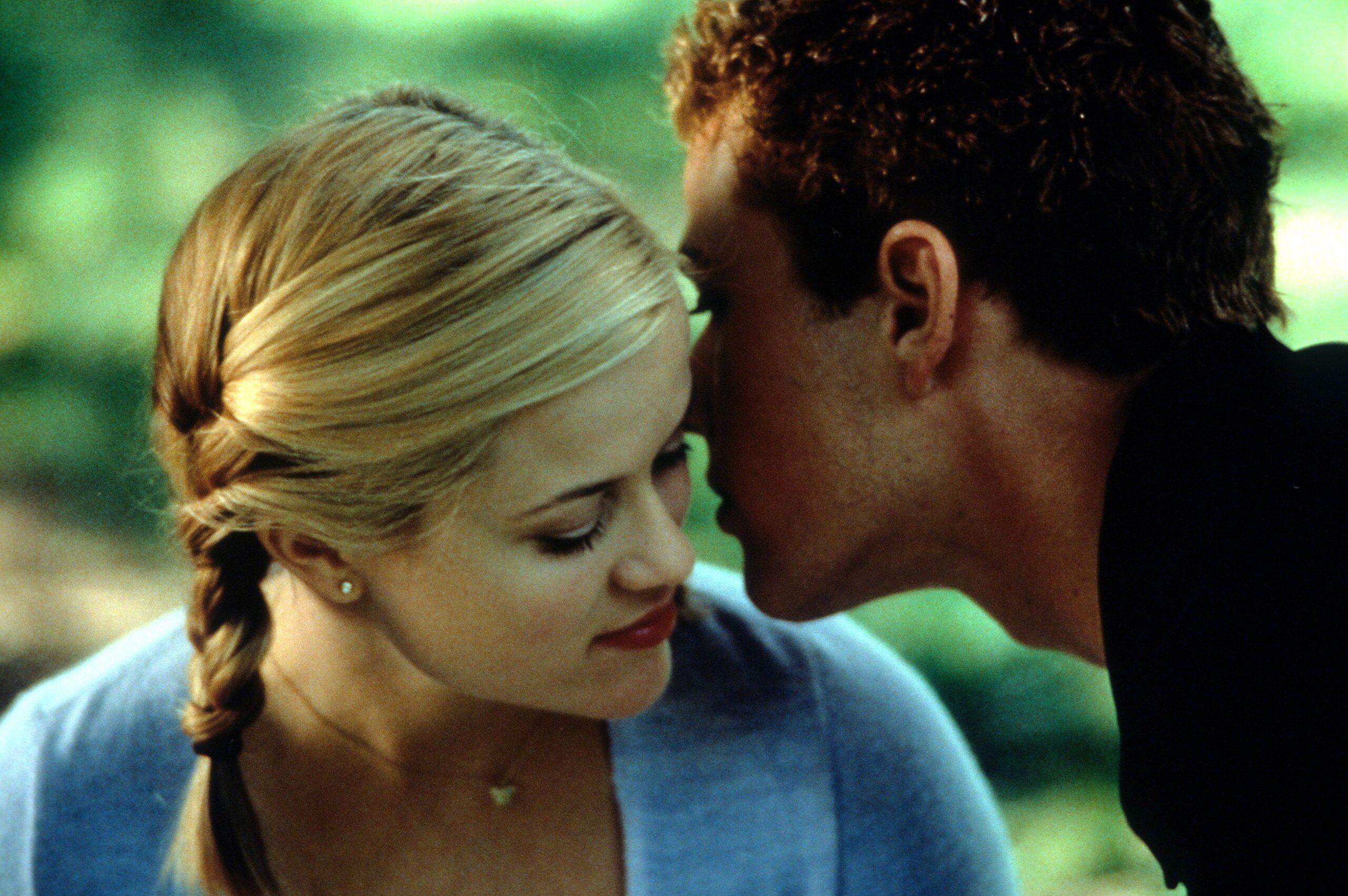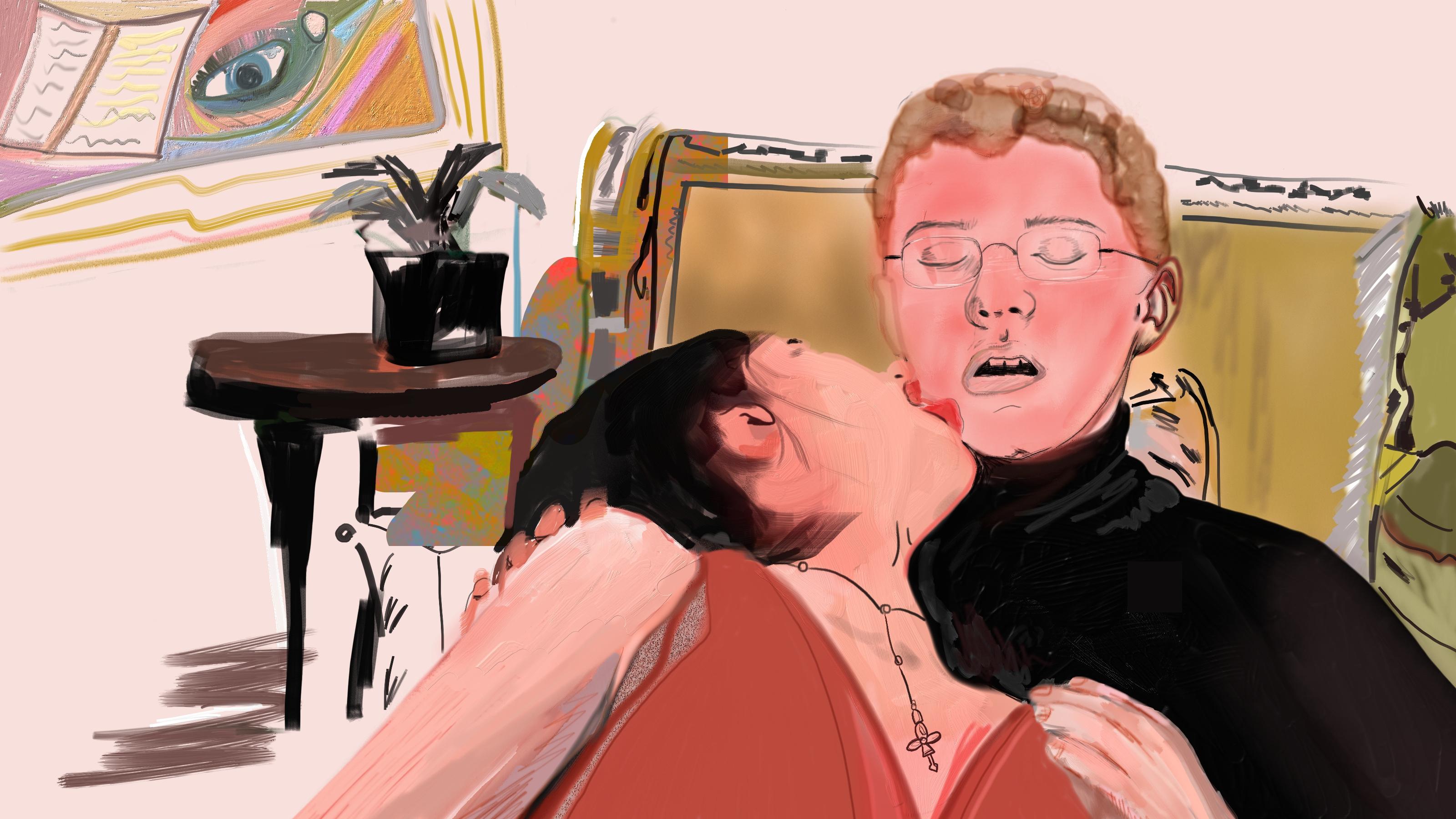How ‘Cruel Intentions’ Killed the ’90s Teen Movie—and Became an Instant Classic
The high school version of ‘Dangerous Liaisons’—starring Sarah Michelle Gellar, Reese Witherspoon, Ryan Phillipe, and more than a little sex—pushed boundaries so far that it broke them. Twenty years later, its creators are still a little surprised it got made at all.“You’ve got killer legs.”
Sebastian Valmont, a 17-year-old wearing the suit of a 35-year-old Bear Stearns employee, is hitting on his therapist. He seems dour and troubled, having somehow lived on earth long enough to become a full-blown sex addict. But by the time he’s holding onto a parting hug with the therapist for five seconds too long—and vaguely humping her—it’s become clear that this is just an act. He’s trolling her for his own pleasure.
As Sebastian leaves the therapist’s office, she gets a phone call from her daughter (played by a post–Big Lebowski, pre–American Pie Tara Reid). She’s in tears, in a full-on panic. A guy—Sebastian, actually, which we know because the daughter has helpfully taped a picture of him to her computer—seduced her into taking nude photos and then uploaded them on the internet without her consent. The therapist, incensed, chases down Sebastian, yelling at him through the glass wall of a second-story hall. He smiles up at her in a way that communicates generations of entitlement and a sort of infuriatingly soulless evil; cops swarm—around the therapist, of course; a woman approaches Sebastian; he hits on her; she’s into it.
“She was charging too much,” Sebastian tells his stepsister, Kathryn, in the next scene, explaining why he felt it necessary to ruin multiple lives in one fell swoop. Moments later, he and Kathryn engage in some light incest.
Fewer than 12 minutes into Cruel Intentions—the 1999 film that took an era of teen movies to another level and, in effect, ended the era altogether—Sebastian Valmont has committed a cybercrime and an act of sexual assault and has flirted with another felony. And he is, without question, the hero of the movie.
Every generation gets the teen movie it deserves. The ’80s got a decade full of John Hughesian sexual awakening; currently, the 2010s are seeing a rise in made-for-social-media romance on Netflix. In the second half of the 1990s, a teen movie boom was swelling. Starting with Clueless in 1995, the genre officially exploded in December 1996 with the release of Scream. Wes Craven’s horror flick never topped the box office but had a rare and remarkable staying power, making more money in its second and third weeks than in its first, holding a steady audience after that, and remaining in theaters for a whopping 18 weeks. By the time Scream was out of theaters in late May 1997, the movie had made $173 million worldwide on a $14 million budget and the teen movie was Hollywood’s newest hack, as studios began to make a concerted effort to target the MTV generation. “Suddenly every place was open for business for teen movies,” Can’t Hardly Wait codirector Harry Elfont told The Ringer last June. “It didn’t even need to be a horror movie. [Studios] just realized that there was a huge teen audience that was being underserved, so everybody was looking for teen scripts.”
1997 brought I Know What You Did Last Summer and Scream 2, both obvious descendants of Scream, both hugely successful ($72.6 million and $101.4 million domestic totals, respectively). The next year brought Can’t Hardly Wait, a your-life-could-change-in-a-night party movie that, like Scream, mixed earnestness with self-awareness and presented a fantastical version of teenage life. Then came the deluge of 1999, a year dominated by this brand of teen movie: Varsity Blues, She’s All That, Jawbreaker, Cruel Intentions, 10 Things I Hate About You, Never Been Kissed, and American Pie all hit theaters in the first seven months of the year.
It was a glorious time, accompanied by the breakout of MTV’s Total Request Live and the emergence of the WB’s Dawson’s Creek–led slate of programming, as execs seemed to realize all at once that the interests of young people were a viable source of commodification.
You have a few moments in your life where you’re struck with a good idea, and I was literally outside of a Crunch Gym on Crescent and Sunset, and I had the idea to do Dangerous Liaisons [set] in high school.Cruel Intentions writer-director Roger Kumble
By 2000, the Scream franchise had grown into adulthood with Scream 3, leaving only Bring It On to hold up the mantle of the late-’90s teen movie. By the end of 2001, Not Another Teen Movie, a send-up of nearly every teen flick from the era, put the genre in the ground for good.
Genres come into fashion and just as quickly fall out of favor all the time in Hollywood. But the teen movie of the late ’90s burned particularly fiercely, and its rapid disappearance is a bit perplexing on paper. There are several explanations for this: mere oversaturation, a change in the country’s political climate, the film industry’s turn toward franchises in the 2000s. But another explanation is that this version of the teen movie had been so forcefully pushed to its brink—by one movie in particular—that the only possible next steps were parody and then, soon after that, extinction.
It took Roger Kumble only 12 days to write the script for Cruel Intentions. “You have a few moments in your life where you’re struck with a good idea, and I was literally outside of a Crunch Gym on Crescent and Sunset, and I had the idea to do Dangerous Liaisons [set] in high school,” says Kumble, who would also go on to direct the movie.
It was April 1997, and Kumble had been enamored of Todd Solondz’s Welcome to the Dollhouse, a movie he says showed him for the first time that “kids can be so awful.” There had already been two film adaptations of Les Liaisons Dangereuses, the 1782 novel by Pierre Choderlos de Laclos in which two high-born French ex-lovers make a game out of seducing, controlling, and exploiting others. In 1959, French director Roger Vadim set an adaptation of the novel in then-present-day France, while an American period piece written by Christopher Hampton, directed by Stephen Frears, and starring Glenn Close, John Malkovich, and Michelle Pfeiffer was released in 1988. “Everyone knows the Hampton version,” says Kumble, “but I took more from Vadim because Vadim did it first and modernized it.”

Kumble’s main characters, Sebastian and Kathryn Valmont (played by Ryan Phillippe and Sarah Michelle Gellar), are, in the model of the novel, plainly evil—crass, heartless, devious; the main plot sets off when Sebastian declares it his mission to bed Annette Hargrove, a virgin from Kansas City who’s saving herself for marriage (played by Reese Witherspoon), and Kathryn bets that he’ll fail. The reward should he succeed? Permission to have sex with Kathryn, his stepsister. “You can put it anywhere,” she tells Sebastian, a promise that convinces him to take the bet.
But Sebastian and Kathryn are also undeniably magnetic—cool, rich, impossibly mature and sexually advanced. They are antiheroes before antiheroes existed. And, perhaps most importantly, they’re still in high school.
“I just thought it was really daring,” says Neal Moritz, who jumped at the chance to produce Cruel Intentions. “It was a very, very different teen movie. There were some people who thought we were crazy to go make a movie like this, that it was just too risque. My girlfriend at the time was like, ‘Man, that’s really pushing the edge.’ But I think that’s ultimately why I really liked it, to be honest.”
The boldness of Kumble’s script, its unapologetic cruelty, was a self-marketing machine. “The script had heat with that generation,” Kumble recalls. Cruel Intentions was exactly the kind of project young actors were looking for: a clearly R-rated movie that’d signal a departure from the PG-13 fare they’d been exclusively cast for in the past. Having worked with Gellar and Phillippe a year before on I Know What You Did Last Summer, Moritz got the two actors to sign on for Cruel Intentions before they had even secured studio backing. The role of Annette was a bit harder to cast. Katie Holmes and Vinessa Shaw both read for the role, but neither ended up taking it. So Kumble turned to one of his stars for help. “I was hanging out with Ryan and I’m like, ‘What about your girlfriend?’” By that point, Witherspoon had made a few splashes in movies like Fear and Pleasantville.
“So we took [Reese] out to dinner,” says Kumble. “We ended up getting pretty drunk. I remember getting on my hands and knees and begging. I’m like, ‘Just do it. Fifteen days.’ And to Reese’s credit, she was like, ‘Uh, the character needs work.’ I was like, ‘Come over tomorrow. We’ll fix it.’ She and I worked on the character for three days, just strengthening it—Reese is insanely smart, and she definitely brought [in] the character’s convictions.” (Witherspoon declined to comment for this article.) “It was nutty,” says Moritz. “It was this thing that even cool actors were interested in, so we went off and started making the movie without a distributor.”
During a meeting with Amy Pascal, Sony’s new chair, Moritz told her about Cruel Intentions. “She said, ‘Why aren’t we making that movie?’ and I said, ‘Well, your predecessor actually said they didn’t wanna make it.’ But then she read it and was like, ‘I have to have it.’”
“It was really sexy and it was really provocative, and people weren’t making stuff like that in those days,” says Pascal. “It was a really sophisticated teen movie, an R-rated, sexy teen movie that was the first of its kind. And that’s what I always wanted to be doing.”
The commandeering studio exec who curbs a creator’s instincts is a well-worn Hollywood trope, but it was actually Pascal who pushed Kumble and Moritz to stick to their guns with Cruel Intentions. “She was like, ‘Go for it,’” says Moritz.
“Amy Pascal, I owe her everything,” Kumble says. “We had tested the movie, and it didn’t test well. All of the cards were like, ‘I hate that he dies at the end.’ In the hands of a lot of studio executives, I would have been reshooting. And Amy said, ‘The reason why your movie’s testing so bad is because they love it.’”
“That was awesome,” Pascal says, laughing and remembering the early reactions. “I mean, that was the whole idea. Golly, why would you do it otherwise?”
It was really sexy and it was really provocative, and people weren’t making stuff like that in those days. It was a really sophisticated teen movie, an R-rated, sexy teen movie that was the first of its kind. And that’s what I always wanted to be doing.former Sony Pictures chair Amy Pascal
With Pascal’s encouragement, the final product of Cruel Intentions is exactly what the original script promised: a shocking spin on the teen movie that maintained the genre’s penchant for fantasy and wish fulfillment while stripping away all of its naivete and saccharinity. It was melodramatic, openly rude, mean, sometimes grotesquely sexy, and anti-LGBTQ. Sebastian breaks into a house where two men are having sex and starts taking photos, to be used for blackmail. In another scene, Gellar’s Kathryn writhes on top of Sebastian before getting up, looking at his crotch, and whispering, “down, boy”; in another, she teaches Selma Blair’s Cecile how to kiss in the middle of Central Park. “Someone said, ‘You need to go again—there was spit between their lips,’” Kumble says, recalling the scene. “And [our cinematographer] Theo [van de Sande] goes, ‘No, it’s beautiful.’ And I’m like, ‘Yeah, it’s beautiful. Fuck that.’”
The movie ends with Sebastian’s being abruptly hit and killed by a car—in Central Park, of course—before Annette exposes Kathryn’s deceit (and coke problem) to the world and drives off into the sunset to the tune of the Verve’s “Bitter Sweet Symphony.” After 90 minutes of near smut, the turn toward soap opera is a shock to the senses—par for the course for Cruel Intentions—but it’s also undeniably affecting. And in the midst of a teen movie boom, the weird chemistry of Cruel Intentions stood out. “We just really felt like we were on the edge,” says Moritz. “Honestly, it felt like the movie was either really going to work or be a total disaster. It didn’t feel like there was any kind of in-between.”
“It was shockingly cruel and shockingly honest,” says Pascal, adding: “Everything had to push the edge to be interesting.”
Cruel Intentions was released on March 5, 1999, taking in $13 million in its first weekend to finish second at the box office behind Analyze This. (The movie returned to theaters March 22 this year for a special one-week run.) Altogether, it was a success: By the end of its theatrical run, the movie had made nearly $76 million worldwide on a $10.5 million budget. What’s more, it almost instantly became iconic—Gellar and Blair won Best Kiss at the 2000 MTV Movie Awards, Phillippe and Witherspoon’s real-life relationship allowed fans to continue to follow Sebastian and Annette’s story, and Cruel Intentions itself enjoyed a second life on the movie slates of premium channels, providing a foundation for the twisted sexual awakenings of teenagers everywhere. (Even today, there is a disconcerting number of Sebastian-Kathryn tribute videos on YouTube.)
But despite the success, Cruel Intentions has no heirs (unless you count the two forgettable, straight-to-video sequels that were released in 2001 and 2004, respectively). American Pie would be released four months after Cruel Intentions and become the most successful teen movie of the era, taking in over $235 million worldwide. Because of the movie’s massive success—and because in the movie, a character humps an apple pie—it became the main talking point in terms of pop culture’s depictions of teen sex. But American Pie’s sexual nature is more puerile and played for humor, whereas Cruel Intentions’ is projected with a straight face and borderline haunting. As the most lascivious entry in the ’90s teen movie boom, Cruel Intentions is one of the most notable films of the era. But it might also be the movie that popped the bubble. Because after pushing the boundaries so far, where else is there to go?
“I think we successfully killed the [teen movie],” says Joel Gallen, who helmed Not Another Teen Movie in 2001. In the late ’90s, Gallen spent most of his time producing the MTV Movie Awards. As part of the job, he’d direct the short parodies that ran during the shows—such as the “Ben Stiller as Tom Cruise’s stunt double” short, and the “Lisa Kudrow plays a Jedi” clip, among many others. That made him the perfect person to send up the teen movie genre, an idea championed by none other than Neal Moritz and Amy Pascal.
“There was such a spate of teen movies, and it just became, like, every teen movie was the same thing,” Moritz says. “And I was like, ‘OK, I wanna make fun of what we’ve been doing.’”
Scary Movie had been released in July 2000 by Miramax and was an instant success, if not a cultural phenomenon. It made over $42 million in its first weekend on the way to a worldwide total of $278 million. Its extremely referential humor and smart-alecky brand of cynicism quickly became the new, accepted mode of comedy—but also paved a way forward for Hollywood in general, creating a blueprint for how studios could build on existing properties while at the same time appearing innovative and original. And after horror, no other genre was more primed for a takedown than the teen movie. “There were just so many teen movies, and so many conventions of teen movies that were ripe for parody,” says Gallen.
Released in December 2001, Not Another Teen Movie—starring Captain America himself, Chris Evans—uses She’s All That as the backbone to its story, but heavily parodies the absurdity of Cruel Intentions, spoofing Kathryn and staging a version of the iconic kissing scene that features an elderly woman and a lot more saliva. “I loved it,” Moritz says. “I just thought it was a good, funny way to take the piss out of it. … It was just a great send-off of that genre.”
The movie itself isn’t exactly a shining testament to power of filmmaking. It’s consistently infantile and frequently gross, relying on a substantial amount of potty humor. In his review of the film, Roger Ebert wrote, “It was not good to see yet still more wretched excess in the jokes about characters being sprayed with vast quantities of excrement.” In a 2014 interview, Evans mused, “The movie had me stick a banana in my ass. It wasn’t exactly some highbrow art.”

But the quality of the movie is hardly the point—what it called attention to was far more important. Thanks in large part to Cruel Intentions, teen movies had grown to be, while enjoyable, absolutely ridiculous. After a movie in which the most sexual tension is between two characters who are related by law, the only viable next step was a commentary on that preposterousness. (In Not Another Teen Movie, Catherine responds to her brother’s protests that they can’t have sex because they’re related by saying, “Only by blood.”)
“You always have to keep moving forward,” Pascal tells me. “It was just like, what can we do that would be cool? That would push the envelope again?”
In calling attention to the tropes of the teen movie, and to how over-the-top this version of the genre had become, Not Another Teen Movie effectively ended it. After turning the era into the butt of the joke, there was no going back. And really, no one did go back: The late-’90s teen movie disappeared—or perhaps more accurately, ran off and found a more stable home at Fox and the WB.
“It is crazy that there really haven’t been [anymore movies like that],” Gallen says. “I’m sorry if we played a part in that, in crushing a franchise. I’m sure it’s just a crazy coincidence, but it is ironic.”
The history of Hollywood is a story of associative evolution. Nothing happens in a vacuum—everything is in reference or in reaction to something that came before it. That is no more evident than in the life cycle of the teen movie, from the early days of Rebel Without a Cause and American Graffiti to the John Hughes–dominated ’80s to the boom of the ’90s, which added a sheen of beauty and fantasy to the genre before Cruel Intentions sauntered in wearing a corset to dial the sex, mischief, and overall vileness to 11 and bring an era to its logical conclusion. From there, the genre could only look inward and self-immolate.
There was such a spate of teen movies, and it just became, like, every teen movie was the same thing. And I was like, ‘OK, I wanna make fun of what we’ve been doing.’Cruel Intentions producer Neal Moritz
“Look, genres kind of go away,” Moritz says matter-of-factly. Or they go through cycles; less than a decade later—years after Cruel Intentions had stretched the genre to a breaking point and Not Another Teen Movie had made audiences aware of that breaking point—what emerged in its place was a more down-to-earth, truer-to-life kind of teen movie, kicked off by 2007’s Superbad, a film that was also green-lit by Pascal. (“Oh that’s so funny, I never really thought about it that way,” Pascal tells me when I note how, as chair of Sony, she oversaw the films that lit a match under the teen movie, burned it to the ground, and raised it from the ashes. “I guess the push to continue to move forward is responsible for that. At the time, Sony and everybody else I worked with on these movies, we were all trying to do something good.”)
Gone were the teenagers who dressed (and looked) like adults; gone were the psychosexual schemes and arch motivations; gone was the fantasy. In their place were a much more humble brand of storytelling and characters who truly reflected audiences. “There were no movies that were really capturing what we were experiencing,” Seth Rogen told me when we spoke about Superbad in 2017, “so we wrote one.” That sort of teen movie became the mode, and is still the foundation for today’s era of teen movies, films like 2017’s Lady Bird, 2018’s The Kissing Booth and To All the Boys I’ve Loved Before, and Olivia Wilde’s upcoming Booksmart. The ethos of Superbad lives on, though as years have passed, filmmakers like Greta Gerwig and Susan Johnson have built on it to make movies that are more confident, less sexually frustrated, and less male-centric.
What we have now is kinder, more empathetic, more eager to embrace the awkwardness of sex and growing up. But we couldn’t have gotten here without Sarah Michelle Gellar snorting cocaine out of a crucifix and dry-humping her stepbrother into oblivion.


